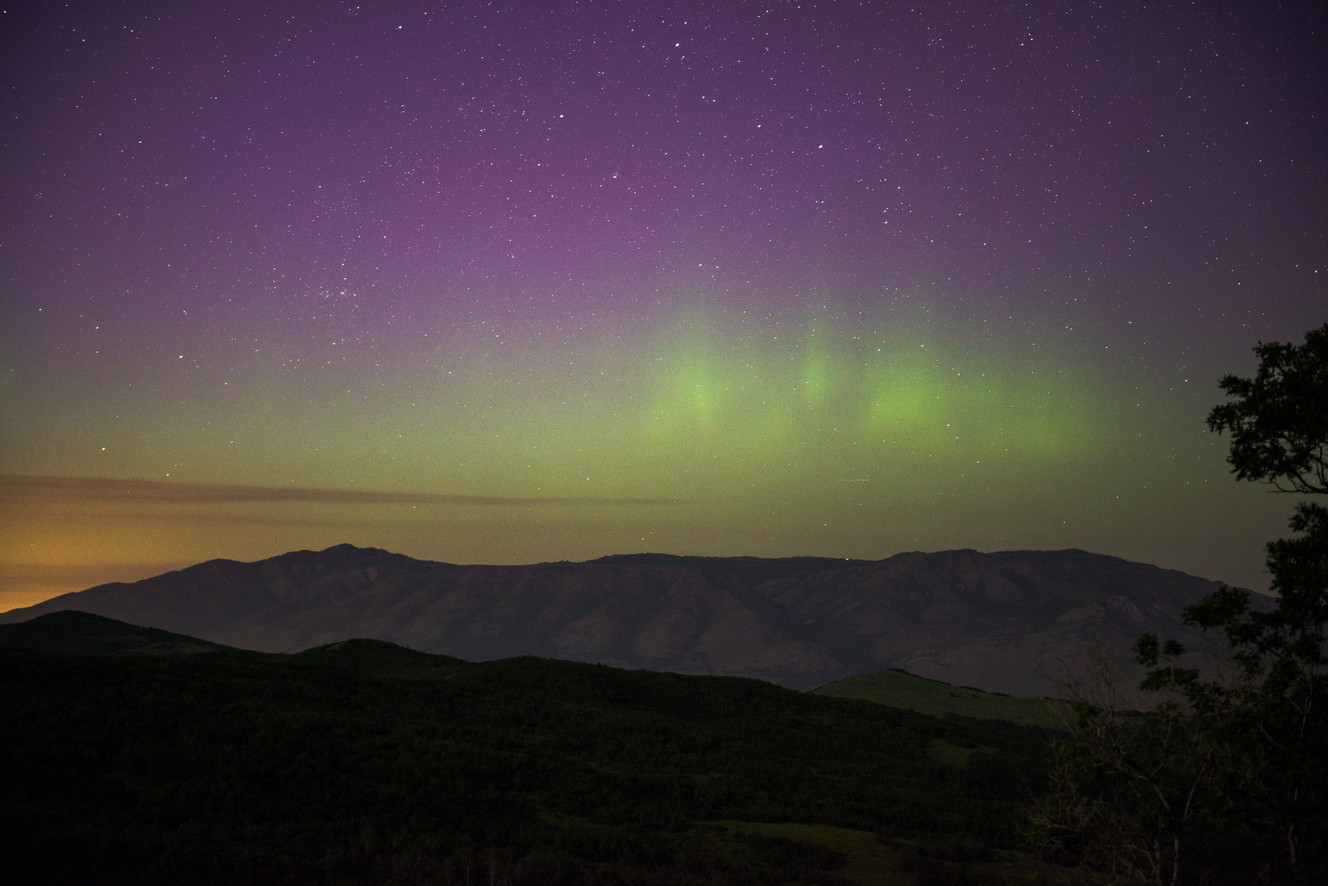Estimated read time: 2-3 minutes
This archived news story is available only for your personal, non-commercial use. Information in the story may be outdated or superseded by additional information. Reading or replaying the story in its archived form does not constitute a republication of the story.
SNOW BASIN — Photographers watching the Utah sky late Monday night were treated to a rare display of the northern lights.
Jeff McGrath, a local photographer and programmer, planned a trip to Trappers Loop near Snow Basin with friends after seeing a geomagnetic storm alert which indicated there was a chance the aurora borealis could be seen from Utah.
However, when the lights actually showed it was a surprise. McGrath has been following aurora alerts for years, but every time he headed to the mountains with his camera before, nothing happened.
“This is the first time I’ve actually been able to see it with the naked eye,” he said. “All of a sudden around 11:30 (p.m.) it was like someone slowly turned on a whole bunch of spotlights from behind the mountains. The sky just absolutely lit up.”
The aurora borealis was produced by an unusually severe geomagnetic storm, according to the National Oceanic and Atmospheric Administration. It said the storm was caused by a coronal mass ejection from the sun, which struck the Earth’s magnetic field. People in places like Colorado, Minnesota and Iowa reported seeing the aurora borealis.

Jeff McGrath
McGrath said the aurora appeared mostly white to the naked eye, but the cameras were able to pick up the storm’s bright colors. This phenomenon happens because the human eye sees limited colors during low-light situations, according to space.com.
“It was just amazing,” he said. “All of us were just standing there just watching this grow and get bigger and bigger and bigger and it was taking up a huge portion of the sky. We ended up all having to switch to wide-angle lenses because you couldn’t even fit the full thing in on a regular 24-70 camera lens.”
McGrath estimated the aurora lasted for about 20 or 30 minutes before it dissipated. He and his friends hung around on the mountain for a while afterward but rushed home to edit photos at 3 a.m. when the storm appeared to have moved to the west.
Seeing the light show required patience. McGrath was on the mountain in the cold from 8:30 p.m. to about 1:30 a.m. However, he said the long hours were worth it.
“Last night, I absolutely did not think I was going to be coming away with those kinds of photos at all,” he said.
The geomagnetic storm is still active, but the aurora borealis isn’t as likely to be visible from Utah on Wednesday night. Current storm conditions can be found on the NOAA website.







